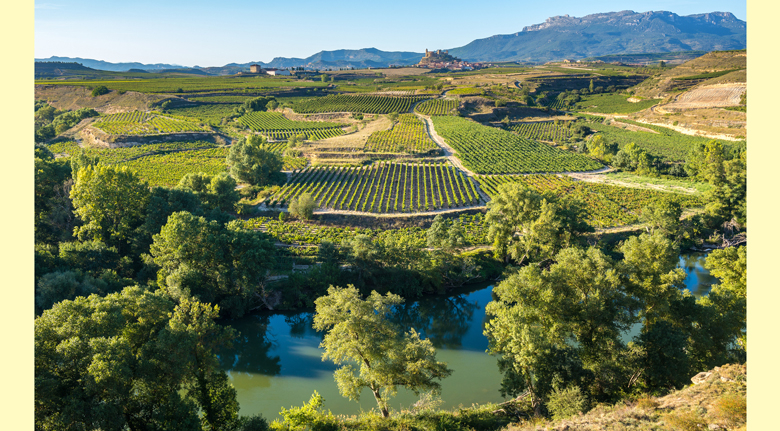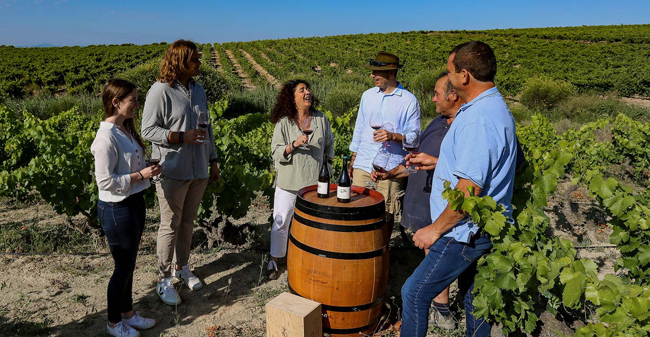Rioja: top reds as well as excellent whites to discover
100 years Consejo Regulador de la Denominación de Origen Calificada (D.O.Ca) Rioja
https://www.bonvinitas.com/media/reviews/photos/thumbnail/780x480c/f3/25/18/rioja-top-reds-as-well-as-excellent-whites-to-discover-66-1750259403.jpgYoung and fresh
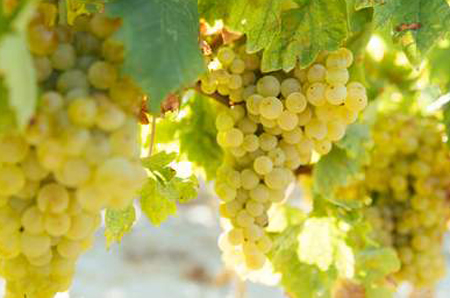 Rioja's young white wines delight with their freshness, fruitiness, and lightness—ideal for immediate enjoyment. Made primarily from Viura and Tempranillo Blanco, they exhibit aromas of citrus fruits, white flowers, and green apple. The wines mostly come from the cooler, higher-elevation regions of Rioja Alta and Alavesa, where the temperate climate ensures freshness. Matured in stainless steel tanks and fermented at low temperatures, the wines retain their varietal aromas and are perfect accompaniments to light dishes, seafood, or simply on their own.
Rioja's young white wines delight with their freshness, fruitiness, and lightness—ideal for immediate enjoyment. Made primarily from Viura and Tempranillo Blanco, they exhibit aromas of citrus fruits, white flowers, and green apple. The wines mostly come from the cooler, higher-elevation regions of Rioja Alta and Alavesa, where the temperate climate ensures freshness. Matured in stainless steel tanks and fermented at low temperatures, the wines retain their varietal aromas and are perfect accompaniments to light dishes, seafood, or simply on their own.
Complex and exciting
In addition to fresh, young wines, Rioja also offers complex, barrel-aged white wines that are among Spain's most exciting. These often come from old Viura vineyards, complemented by Malvasía Riojana or Garnacha Blanca. Viura, in particular, adds depth and structure with age – perfect for aging in barriques or large oak barrels. Many of these wines mature as Reserva or Gran Reserva wines, sometimes for several years in barrel and bottle. Their origins often lie in select parcels of land in Rioja Alta and Alavesa, where cool nights and chalky soils guarantee structure and freshness. In the cellar, winemakers rely on long lees aging, regular batonnage (stirring up the lees), and targeted use of wood – sometimes subtle, sometimes deliberately oxidative. The result: complex white wines with aromas of ripe fruit, spices, vanilla, and nuts – ideal partners for fine cuisine, game birds, veal, or aged cheeses.
All of this supports the statement: Rioja can also white!
The following tasting notes of three wines with different characteristics bear eloquent witness to this.
Marqués de Cáceres
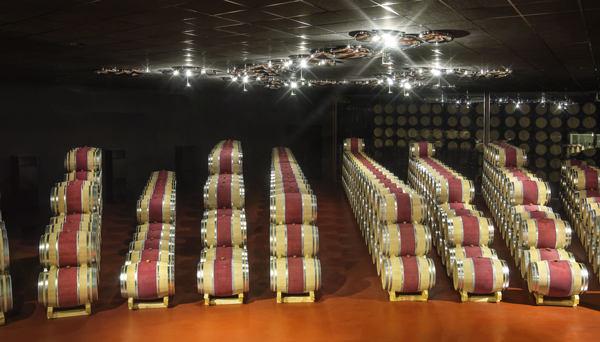 There is no noble family behind Bodega Marqués de Cáceres. In 1970, the bourgeois wine merchant Enrique Forner founded Marqués de Cáceres, Unión Vitivinícola, SA. In doing so, he used – with his permission – the courtly name of a good friend. The descendant of the Marquis of Cáceres also maintains close ties to the bodega. Today, Enrique's daughter, Cristina Forner, continues to run the company with the proven recipe for success: the highest quality is both the path and the goal. Cellar master Fernando Costa, of course, is happy to participate. The vineyards of Marqués de Cáceres are located primarily in Rioja Alta. The cellars and headquarters of the bodega are also located there – more precisely, in the fine town of Cenicero, near the city of Logroño. Since 2014, the SA has also owned a 120-hectare vineyard in Rueda. The cellars contain over 40,000 barriques for aging the red wines. The white wines rarely go into barrels. While about half of the wines remain in Spain, the rest are exported worldwide. The wines are exported to over 120 countries. The white wines are exceptionally floral, while the rosés are crisp and fruity.
There is no noble family behind Bodega Marqués de Cáceres. In 1970, the bourgeois wine merchant Enrique Forner founded Marqués de Cáceres, Unión Vitivinícola, SA. In doing so, he used – with his permission – the courtly name of a good friend. The descendant of the Marquis of Cáceres also maintains close ties to the bodega. Today, Enrique's daughter, Cristina Forner, continues to run the company with the proven recipe for success: the highest quality is both the path and the goal. Cellar master Fernando Costa, of course, is happy to participate. The vineyards of Marqués de Cáceres are located primarily in Rioja Alta. The cellars and headquarters of the bodega are also located there – more precisely, in the fine town of Cenicero, near the city of Logroño. Since 2014, the SA has also owned a 120-hectare vineyard in Rueda. The cellars contain over 40,000 barriques for aging the red wines. The white wines rarely go into barrels. While about half of the wines remain in Spain, the rest are exported worldwide. The wines are exported to over 120 countries. The white wines are exceptionally floral, while the rosés are crisp and fruity.
Here are the tasting notes of one of his wonderful white wines:
2024 Marqués de Cáceres white, 12%, Rioja Denominación de Origen Califacada
The freshness and vibrancy of this wine are immediately evident in the aroma. It's as if someone had switched on the light. Delicate and nuances of fresh leaves, mineral notes, and a subtle smoky note. This sense of optimism continues in the palate. The invigorating fruit acidity takes center stage, releasing aromas of freshly mown grass, young leaves, green apple, and boxwood. Always on the move, gripping, and very present. A young wine with a story to tell. It's a pleasure to listen to. Pure drinking pleasure.
La Marciana
The Bodegas La Marciana has its origins in the shared passion of two families. The Serrano family—more specifically, Andrés, Ramón, & Álvaro—look back on a centuries-old family tradition of winemaking in Andosilla, Rioja. Their family owns the Mariano vineyard, which has never been vinified individually. The vines at Mariano were planted in 1900—that's 120 years ago. On the other side are Philipp and Nadine—she a French communications specialist, he an Austrian oenologist. What unites the two families is their passion for wine, their love of Rioja, and their awareness that the Mariano vineyard, with its 120-year-old vines, is something very special. This vineyard also forms the basis for the passionate challenge for the two winemakers Nadine and Philipp: they want to combine the expressive winemaking style of Châteauneuf du Pape with a focus on single-vineyard wines and pure terroir from Burgundy. A challenge that they master with flying colors.
The following tasting note reveals what such a masterpiece can taste like:
2023 La Marciana white, 13%, Rioja Denominación de Origen Califacada
 A dense, voluminous bouquet with exotic aromas. Vanilla, smoke, mango, orange peel. I wonder what it will taste like? Pure curiosity. Wow, from 0 to 100 in just a few seconds. This is where it all happens. The wine immediately fills the entire mouth. An unparalleled spectrum of aromas. It's astonishing how everything fits together. Wonderfully integrated tannins provide earthiness and fullness in the mouth. The fruit acidity unlocks the full range of aromas: mango, lemongrass, pineapple, grapefruit, and orange peel. These are joined by notes of mint and clove. A subtle smoky note hangs over the whole like a veil. Every sip is an experience. The finish is phenomenal. Food for the soul.
A dense, voluminous bouquet with exotic aromas. Vanilla, smoke, mango, orange peel. I wonder what it will taste like? Pure curiosity. Wow, from 0 to 100 in just a few seconds. This is where it all happens. The wine immediately fills the entire mouth. An unparalleled spectrum of aromas. It's astonishing how everything fits together. Wonderfully integrated tannins provide earthiness and fullness in the mouth. The fruit acidity unlocks the full range of aromas: mango, lemongrass, pineapple, grapefruit, and orange peel. These are joined by notes of mint and clove. A subtle smoky note hangs over the whole like a veil. Every sip is an experience. The finish is phenomenal. Food for the soul.
Bodega Faustino
The third wine is a prime example of what nature, soil, grape variety, winemaking skills, and the necessary patience during aging can conjure into the glass. Faustino, produced by Bodegas Faustino, is one of the most popular Rioja wines in the world. This family group has been dedicated to winemaking since 1861 and is known for its consistency in producing high-quality wines, as well as for its striking bottle and label designs, which typically represent well-known historical figures.
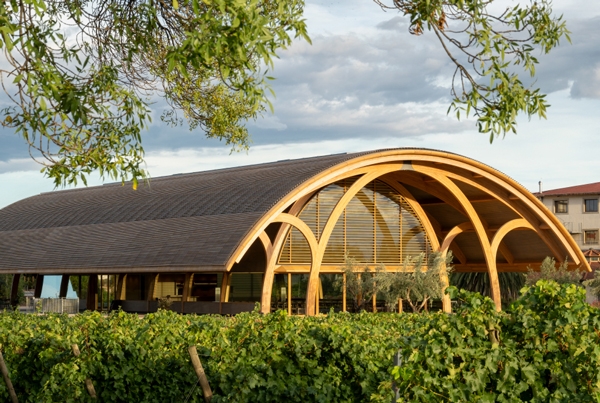 Today, Faustino Rioja owns approximately 650 hectares of vineyards, produces a wide range of wines, and is the world's leading exporter of Rioja Gran Reserva. Wine classification: The wines produced in Bodegas Faustino's vineyards are all named Faustino and are always followed by a Roman numeral: The top-of-the-line wines have the Roman numeral I. The mid-range Faustinos have the Roman numeral V, and the entry-level Faustinos have the Roman numeral VII. Finally, there are Crianza, Reserva, or Gran Reserva. And this is what it tastes like:
Today, Faustino Rioja owns approximately 650 hectares of vineyards, produces a wide range of wines, and is the world's leading exporter of Rioja Gran Reserva. Wine classification: The wines produced in Bodegas Faustino's vineyards are all named Faustino and are always followed by a Roman numeral: The top-of-the-line wines have the Roman numeral I. The mid-range Faustinos have the Roman numeral V, and the entry-level Faustinos have the Roman numeral VII. Finally, there are Crianza, Reserva, or Gran Reserva. And this is what it tastes like:
Faustino I - 2019er Gran Reserva Blanco, 12,5%, Rioja Denominación de Origen Califacada
 Perfect maturity. A conglomerate of candied fruits, vanilla, and well-integrated tannins. Well-grounded. Even the aroma exudes enormous depth and richness. What a ticket to entry. A completely different world. Beyond the ordinary. A wine that defies any dissection. This is all about the whole. Influenced by its long aging in oak. The tertiary aromas characterize the wine in an almost aristocratic way. A marathon runner, calmly circling his pace. Incessantly. It rests within itself, radiating security and well-being. Away from the small, fleeting moments, towards eternity. It's a bit like 1001 Nights. Fairytale!
Perfect maturity. A conglomerate of candied fruits, vanilla, and well-integrated tannins. Well-grounded. Even the aroma exudes enormous depth and richness. What a ticket to entry. A completely different world. Beyond the ordinary. A wine that defies any dissection. This is all about the whole. Influenced by its long aging in oak. The tertiary aromas characterize the wine in an almost aristocratic way. A marathon runner, calmly circling his pace. Incessantly. It rests within itself, radiating security and well-being. Away from the small, fleeting moments, towards eternity. It's a bit like 1001 Nights. Fairytale!
More about Rioja and its long tradition
Like most wine-growing regions in Spain, Rioja has a wine-growing history that dates back to ancient Roman times. Numerous fermentation tanks carved into stone bear witness to a wine-making tradition from that time. However, the wines at that time did not yet achieve the renown of later centuries. The Moorish period also arrived, although this lasted far less long than in the south. Rather, it was the monasteries that, as so often in Europe, promoted wine-growing. The fact that the Way of St. James to Santiago di Compostela runs through Rioja was of benefit to producers. Because Rioja winemakers held their wines in high regard, and their reputation grew from the 16th century onward, Rioja wine barrels were branded with a uniform brand. This began in 1560. Written instructions dating back to 1650 detail quality controls for Rioja wines, designed to ensure a consistently high minimum standard, date back to 1650. In 1787, the Real Sociedad Económica de Cosecheros de Rioja, the royal economic association of Rioja winegrowers, was founded. Its purpose was to oversee the quality of the wines and promote the wine trade. The heyday of Rioja wineries began in the second half of the 19th century. A little later, when phylloxera destroyed large parts of French vineyards at the end of the 19th century, many French winegrowers came to Rioja and brought their expertise with them. Before phylloxera could also affect Rioja's vineyards, many vineyards had already been grafted onto phylloxera-resistant rootstocks. A royal decree of 1902 finally clearly defined the Rioja region, defined its origin, and established a rule for labeling.
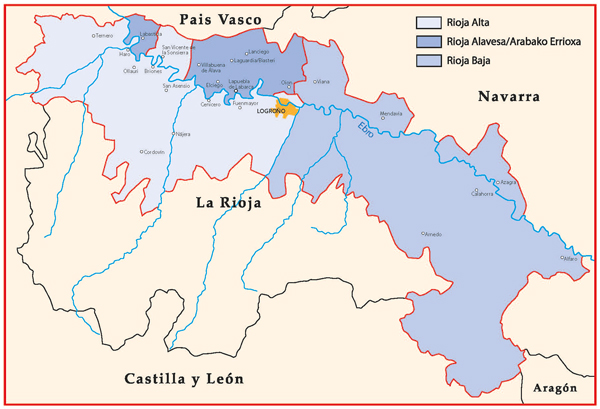 The Control Council, founded on June 6, 1925, and celebrating its 100th anniversary this year, is committed to ensuring that Rioja is among the world's leading wine-growing regions in terms of traceability, quality, and transparency, and communicates on behalf of all wine producers. Today, more than 600 wineries and 14,000 winemakers preserve Rioja's authenticity while adapting to the demands of a global market.
The Control Council, founded on June 6, 1925, and celebrating its 100th anniversary this year, is committed to ensuring that Rioja is among the world's leading wine-growing regions in terms of traceability, quality, and transparency, and communicates on behalf of all wine producers. Today, more than 600 wineries and 14,000 winemakers preserve Rioja's authenticity while adapting to the demands of a global market.
The Rioja region derives its name from the Rio Oja, a tributary of the Rio Tirón. However, it is not the Rio Oja that primarily influences the region, but the Ebro River, along whose banks the vineyards stretch for over 100 kilometers and extend some 40 kilometers into the hills of the hinterland. A geographical peculiarity: The Rioja wine-growing region, with its approximately 60,000 hectares, is located in the northeastern Spanish province of La Rioja, as well as in the autonomous province of the Basque Country and Navarre. Rioja is divided into three subzones: Rioja Alta covers approximately 24,000 hectares, Rioja Alavesa approximately 12,000 hectares, and Rioja Baja approximately 24,000 hectares.
Rioja Alta
Rioja Alta is the sub-region located entirely within the province of La Rioja and is most strongly influenced by the Atlantic. The vineyards are located at higher elevations and cooler than the other two regions. The plains are covered in alluvial and sedimentary soils, while the hills are primarily composed of ferruginous limestone marl with clay and loam layers. Summers are short and hot, autumns are long and largely moderately warm and dry, and winters are cold.
Rioja Alavesa
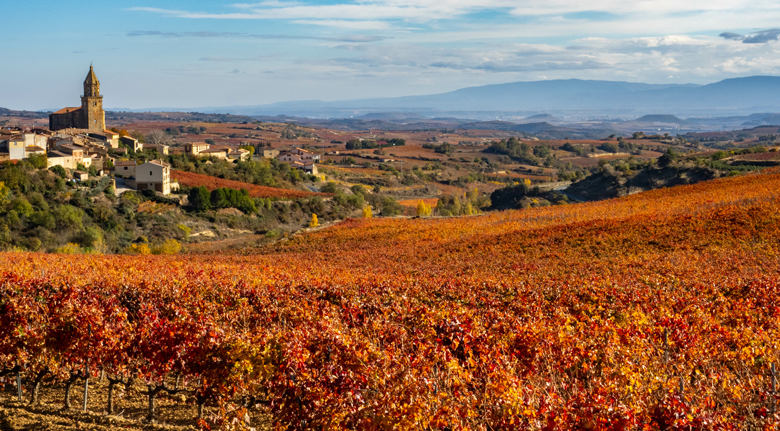 The smaller Rioja Alavese lies north of the Ebro River, which forms the border with the Basque Country. The Alavesa is therefore entirely Basque territory. The climate is similar to that of Rioja Alta, but is influenced somewhat more by Mediterranean winds and tends to be somewhat warmer. The vineyards are located at high altitudes and are dominated by a mixture of clay and limestone. Tempranillo, in particular, produces lighter and fruitier wines with a delicate flavor.
The smaller Rioja Alavese lies north of the Ebro River, which forms the border with the Basque Country. The Alavesa is therefore entirely Basque territory. The climate is similar to that of Rioja Alta, but is influenced somewhat more by Mediterranean winds and tends to be somewhat warmer. The vineyards are located at high altitudes and are dominated by a mixture of clay and limestone. Tempranillo, in particular, produces lighter and fruitier wines with a delicate flavor.
Rioja Baja
The zone extends east of the provincial capital, Logroño, across Rioja and neighboring Navarre. The climate there is already distinctly Mediterranean, meaning it is warmer and drier than the other two zones. The vineyards are largely dominated by iron-rich clay. These soils support more Garnacha than Tempranillo. The wines are accordingly softer, fuller, and higher in alcohol. They are also more frequently produced as rosés there. Rioja from Rioja Baja is considered easier to drink and can be consumed early.
Text: Horst Kröber; Photos: Consejo Regulador DOCa Rioja, unless otherwise stated.
